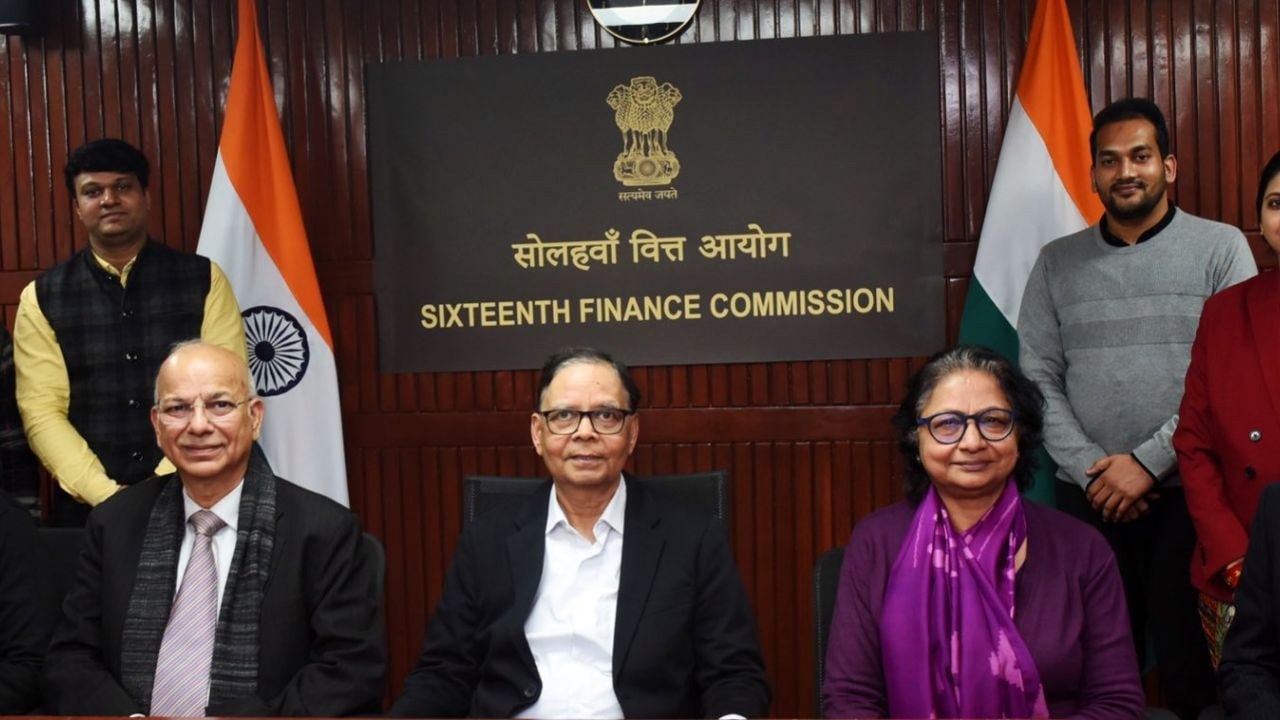
Sixteenth Finance Commission May Retain 41% Tax Share for States
📌 States’ Demands and Likely Outcome
Several Indian states had requested a greater share in the Union government’s divisible tax pool. However, they may be disappointed. The Sixteenth Finance Commission is expected to retain the current 41% share for states, according to two informed sources.
Although the percentage remains unchanged, the absolute value of devolved funds is expected to grow due to increasing nominal GDP and tax revenue buoyancy.
🧾 Commission’s Position on Devolution
Arvind Panagariya, chair of the commission, stated that 22–23 states demanded a higher share—up to 50%. However, the panel is not inclined to revise the Fifteenth Finance Commission’s recommendations drastically.
“There’s a fair chance that 41% will remain the standard for vertical devolution,” said a source close to the matter.
🛡️ Centre’s Spending Priorities at Play
The commission faces a tight balancing act between state expectations and the Centre’s push for increased defence and infrastructure spending.
A government official familiar with the discussions said, “The Centre’s fund needs are growing, particularly for defence. But stakeholders seem comfortable with the existing 41% formula.”
The commission’s report is expected by September 2025 and must be submitted by October.
📊 Why Not 50%? Panagariya Explains
Panagariya explained after a meeting with Uttar Pradesh officials that while the final decision is pending, a 50% share seems unlikely.
“Such a large jump upsets too many carts,” he remarked, calling the proposed increase “too large.”
The Fifteenth Finance Commission had recommended 41% from 2020–2026, adjusting for Jammu and Kashmir’s new union territory status. Previously, the Fourteenth Finance Commission had set it at 42%.
💡 Other Revenue Sources for States
States raise their own revenue through:
- State GST collections
- Auto fuel taxes
- Property-related stamp duty
- Liquor excise duty
- Vehicle taxes and mineral royalties
Dr. N.R. Bhanumurthy, Director of the Madras School of Economics, suggested that state-level income tax, as recently proposed by Dr. Rangarajan, could open a new revenue stream.
He added that recent years have seen a boost in state revenue thanks to higher GST collections and Centre devolution.
💰 Efficiency Is Key
Beyond increasing revenue, states must manage spending efficiently, Bhanumurthy advised.
He emphasized that robust GST performance directly strengthens state finances and justifies Centre-to-state transfers.
📉 Cess Exclusion: A Sticking Point
The Centre’s tax divisible pool excludes cesses, which are collected for specific purposes. This has remained a point of contention among states.
🌍 North-South Disparity in Fund Allocation
Some southern states like Kerala and Tamil Nadu have repeatedly objected to the fund-sharing formula.
They argue that high-performing states on social indicators and population control are being penalized under the current model.
To address such concerns, the Fifteenth Finance Commission included demographic performance in its fund allocation formula.
🧑⚖️ Commission Composition Updates
As of June 7, 2025:
- T. Rabi Sankar (RBI Deputy Governor) was appointed as a part-time member after Ajay Narayan Jha resigned.
- Full-time members include Annie George Mathew and Manoj Panda.
- Soumya Kanti Ghosh, SBI’s Chief Economic Advisor and member of the PM’s Economic Advisory Council, serves as another part-time member.
✅ Conclusion
The Sixteenth Finance Commission is expected to stick to the 41% share for states despite growing demands. While the absolute amount of transfers will increase, the focus remains on maintaining fiscal balance between Centre and states amid capital expenditure and defence needs.
